Enhance Hot Tub Comfort: Control Calcium Levels for Clear Water
June 25th, 2024
June 25th, 2024
Beneath the swirling steam of a hot tub lies a secret ingredient essential for optimal relaxation: calcium hardness. This often-overlooked factor can transform your spa experience from blissful to burdensome if not properly managed. When the calcium levels in your hot tub water are perfectly balanced, it not only ensures the longevity of your equipment but also enhances your comfort, preventing skin irritation and cloudy water.
Years ago, I learned this the hard way. My first hot tub, a gift to myself after a long work project, was a source of joy—until the water turned mysteriously murky. I soon discovered that low calcium levels were the culprit, leading to corrosive water that damaged the tub’s components. Since then, mastering the art of balancing calcium hardness has become second nature. This isn't just about maintaining crystal-clear waters; it’s about preserving that soothing sanctuary.
Many overlook the importance of calcium, focusing instead on pH and chlorine levels. However, calcium hardness acts as the unsung hero of water chemistry. Too little can corrode metal parts, while excess can cause scale buildup—those unsightly white deposits that feel gritty underfoot. Adjusting calcium hardness isn't just a maintenance task; it’s a step towards ensuring that each soak in your hot tub is as luxurious as the first.

Testing the water in your hot tub might seem like an unnecessary chore, but it's the quickest way to ensure your relaxation haven stays in top condition. At times, the water might seem perfectly clear, yet hidden issues could be brewing beneath the surface. Begin with a simple test strip or liquid test kit—these tools can become your best friends in maintaining a balanced spa environment.
A personal anecdote: when I first set up my hot tub, I assumed my municipal water was just fine as is. But a quick dip of a test strip revealed imbalances I couldn't see with the naked eye. It was a straightforward process, taking only moments to dip the strip and compare the resulting color to the chart provided. This small step saved me from potential headaches and costly repairs down the line.
By testing monthly, you can catch any issues early, whether it’s calcium hardness creeping above 250 ppm or dipping below 150 ppm. Too high, and you might face scale buildup, affecting your spa’s performance. Too low, and corrosion becomes a threat, not to mention the potential for foam that’s more reminiscent of a bubble bath than a serene soak.
Remember, precision is key—adjusting water chemistry isn’t about making dramatic changes overnight. Regular testing allows for small, manageable tweaks, safeguarding your spa’s longevity and ensuring each soak is as enjoyable as the last.
Understanding the intricate dance of water chemistry is key to enjoying your hot tub without a hitch. When I first embarked on managing my hot tub, I underestimated the importance of balancing calcium hardness. Like many, I assumed all that mattered was the sanitizer level. But here's the catch: without the right calcium hardness, your chlorine or bromine might not reach their full potential.
Every month, your focus should be on aligning calcium hardness with pH and Total Alkalinity. These three elements form a harmonious trio that keeps your hot tub water pristine. Aim for calcium hardness levels between 150 to 250 ppm. This range isn’t just a random figure; it’s a calculated safeguard against corrosion and scaling—issues that could otherwise turn your serene soak into a maintenance nightmare.
Once, I neglected this balance and ended up with a cloudy mess. A brief oversight, yes, but one that taught me the value of routine checks. By giving your water chemistry the attention it deserves, your equipment remains protected, and the water stays inviting. Remember, every bit of effort you invest now in maintaining this balance pays off with every dip in sparkling, trouble-free waters. Each test strip you dip in is a step closer to that perfect soak.
Balancing calcium hardness in your hot tub is a bit like Goldilocks finding the perfect porridge—not too hard, not too soft, but just right. This balance is crucial to prevent scale and corrosion, two silent culprits that can disrupt your spa experience. Why worry about scale? Well, high calcium levels can lead to unsightly deposits on the tub walls and filters. Worse, the buildup can sneak into the nooks and crannies of your plumbing, potentially clogging up the works and leading to costly repairs. It's like letting barnacles take over a ship’s hull—eventually, it’ll sink your spirits and your wallet.
On the flip side, low calcium levels are no friend either. Without enough calcium, your hot tub water turns aggressive, seeking minerals from the spa's materials. This can lead to corrosion of metal parts like heaters and jets, resulting in damage and inefficiency. Think of it as your spa eating itself from the inside out. Regularly testing and maintaining calcium hardness within the 150-250 ppm range can keep these issues at bay.
In my own spa maintenance journey, I’ve learned to treat calcium levels like an old car's oil—check it monthly and adjust as needed. This simple habit ensures a smoother ride for both the hot tub and the relaxation it promises. Consider it your spa’s secret handshake to long-lasting harmony and enjoyment.
Adjusting calcium levels in your hot tub is like fine-tuning an orchestra. Each element plays its part to maintain harmony, ensuring that your spa remains a haven of relaxation rather than a source of frustration. Let's say it's the weekend, and you've decided to unwind in your hot tub. You dip your fingers into the water, but something feels off—it’s either too silky or rough on your skin. This is a clue that your calcium levels need attention.
Start by grabbing a reliable water test strip and checking the calcium hardness. If the reading falls below 150 ppm, it’s time to boost it with calcium chloride—your dependable ally in this balancing act. Sprinkle this magic powder directly over the water, allowing it to dissolve naturally. This straightforward method not only prevents corrosion but also keeps those pesky foams at bay, ensuring your spa equipment remains intact.
On the flip side, spotting white flakes or experiencing cloudy water signals excess calcium. A gentle approach is to partially drain your hot tub, refill it with fresh water, and use a scale control product weekly. This strategy helps maintain calcium levels within the ideal range of 150-250 ppm, protecting your investment from scale buildup without harsh measures.
Remember, regular monthly checks keep your hot tub in perfect sync, much like a maestro guiding an orchestra, ensuring every note—and every soak—is pitch-perfect.
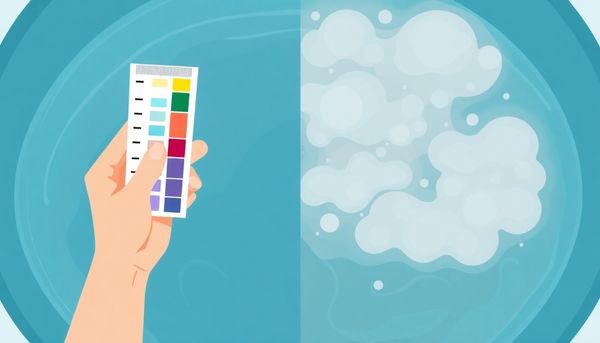
Crafting the perfect soak involves more than just filling your hot tub with water and turning up the heat. Ensuring the right balance in water chemistry is crucial for an enjoyable and trouble-free spa experience. At the heart of this balance lies the delicate art of managing calcium hardness, a key player alongside pH and Total Alkalinity.
In my quest to keep my spa in top condition, I discovered that calcium hardness is like the backbone of water chemistry. Too little and you risk corrosion, which can gnaw away at the metal parts of your tub. Too much, and you face the notorious foe: scale buildup. This can clog pipes and disrupt the smooth operation of your relaxing retreat. It’s like walking a tightrope, but with the right approach, it’s entirely manageable.
When I first started, I routinely checked my tub’s chemistry once a month, quickly learning that staying in the 150-250 ppm range for calcium hardness was key. Testing kits became my trusty sidekicks, offering a quick insight into when things needed tweaking. Remember, if you find yourself dealing with a calcium surplus, a simple water exchange can work wonders. Conversely, adding a calcium hardness increaser will help maintain that sweet spot, safeguarding the longevity of your equipment and ensuring each soak is as blissful as the last.
Testing and adjusting the calcium levels in your hot tub isn't just a chore—it's an essential ritual for keeping your relaxation sanctuary in peak condition. Begin by understanding the importance of testing. A simple monthly check-up with test strips or a liquid test kit helps you maintain that sweet spot of 150-250 ppm, safeguarding both your equipment and your spa experience. In my time as a hot tub owner, I've found that once you get into the rhythm of regular testing, it becomes second nature, much like checking the oil in your car.
When the calcium level strays outside the ideal range, it's time to make adjustments. Should your test results reveal low calcium hardness, resist the urge to panic. Instead, reach for a calcium hardness increaser, commonly made of calcium chloride. This handy solution wards off corrosion and foaming by elevating the calcium levels to the necessary threshold. Remember to follow the manufacturer’s instructions—broadcast the granules across the water surface to allow for even distribution without pre-mixing.
Conversely, if your calcium reading tips over 250 ppm, don’t fret. Relieve the situation by slowly draining some water and refilling with fresh, ideally filtered, water. This dilution helps bring the calcium concentration back to earth. Add a scale control product to keep future calcium buildup in check. Regular maintenance of your hot tub's water chemistry ensures not only the longevity of your equipment but also the quality of every soak you take.
Hot tubs are a source of relaxation and enjoyment, yet lurking beneath the bubbly surface, the threat of corrosion lies in wait. Operating without the proper balance of calcium hardness can be detrimental. Equipment corrosion is a costly and inconvenient problem that can arise from water that's too soft. When calcium levels drop below the recommended 150 ppm, the water becomes aggressive, seeking to balance itself by leaching minerals from anywhere it can, including your hot tub components.
A friend of mine once ignored the signs of low calcium hardness and paid the price with a malfunctioning heater element and jets. It wasn’t until the repair bill arrived that they realized the damage a lack of calcium could cause. This scenario can be avoided with regular checks and adjustments. To prevent corrosion, routinely test your water with a reliable test strip or kit. If results show a drop, it's time to introduce a calcium hardness increaser, such as calcium chloride, directly into your tub. This simple step not only fortifies your equipment against corrosion but also prolongs the lifespan of your beloved spa.
By keeping a consistent eye on calcium levels, you ensure your hot tub remains a sanctuary rather than a source of stress. In this way, you're not just maintaining your hot tub—you're preserving peace of mind.
Scale buildup in a hot tub is like an uninvited guest that overstays its welcome. While a relaxing soak is your aim, ignoring calcium hardness can lead to a crusty, unsightly mess. The problem usually starts when calcium deposits form on the tub’s components, much like the mineral residue you might find on a neglected kettle. These stubborn deposits can restrict water flow in the pipes, hinder the efficiency of your heating element, and even cause damage to the pump’s impeller.
Imagine glancing at your once-pristine hot tub and noticing a white, flaky film clinging to the jets or shell. This is not just an aesthetic issue. Over time, such scale can escalate into costly repairs or replacements. To manage these risks, maintaining the right calcium hardness is crucial. This involves a delicate balance—too high, and you face scale; too low, and corrosion becomes the new peril.
Regular testing, ideally once a month, helps keep the calcium levels within the safe range of 150-250 ppm. If your levels are tipping too high, a partial drain and refill, combined with a scale control product, can work wonders. Using a hose filter when refilling can also reduce the mineral content in the water, offering an extra layer of protection. By being proactive, you preserve the health of your hot tub and ensure every soak remains a blissful retreat.
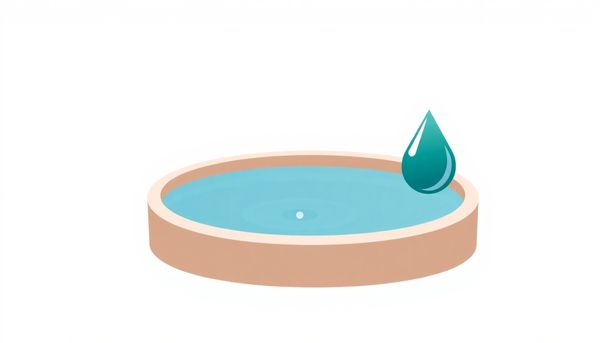
Increasing calcium hardness in your hot tub is akin to fine-tuning a musical instrument; it requires precision and care. The goal is to strike a delicate balance, ensuring your spa remains a haven of relaxation rather than turning into a chemistry experiment gone awry. Begin by determining your hot tub’s current calcium hardness level using a reliable test strip or liquid test kit. A reading below 150 ppm indicates the need for action.
Using a Calcium Hardness Increaser—primarily composed of calcium chloride—can effectively elevate your hardness level. This substance is specifically designed for hot tubs and does wonders in protecting your spa equipment from corrosion. When adding it, avoid any temptation to pre-mix with water as the compound generates heat upon contact with moisture. Instead, gently sprinkle the calcium chloride directly over the water surface, a process known as "broadcasting."
In an instance where calcium granules settle on the spa floor after broadcasting, a gentle nudge with a pool brush or skimmer pole will suffice to dissolve them. Hands should be kept clear of direct contact. Once the desired hardness level is achieved, regular monthly checks are vital to keep your spa environment stable. Balancing calcium hardness not only safeguards your hot tub but also enhances the comfort of your soak, ensuring no unpleasant surprises ruin your moment of relaxation.
Balancing water chemistry in your hot tub is akin to creating a harmonious symphony, where each element plays its part to ensure a smooth performance. In this aquatic concert, calcium hardness takes center stage alongside pH and Total Alkalinity. It's not just a matter of comfort; it's about extending the life of your beloved spa and safeguarding its components.
Consider the consequences of ignoring calcium levels. Low calcium hardness can lead to corrosive water, quietly eating away at your hot tub’s metal parts like the jets and heaters. On the flip side, high calcium levels can result in unsightly scaling, clogging your pipes and jets, much like a stubborn artery blockage. Both extremes are undesirable, with the sweet spot resting comfortably between 150 to 250 ppm.
Regular checks and adjustments are your best defense. Monthly testing keeps things in check and prevents surprises. When adding calcium chloride to increase hardness, remember to sprinkle directly into the water — no pre-mixing needed. And if you find yourself battling high levels, a partial water change might be in order, followed by the use of a scale control product.
Not surprisingly, managing these levels is less daunting than it sounds. Think of it as routine maintenance for a prized possession, ensuring every soak is as enjoyable as the last. With balanced water chemistry, your hot tub remains a sanctuary, offering relaxation without the worry of damage or discomfort.
Testing and adjusting calcium hardness in your hot tub isn't as daunting as it sounds. Begin with a reliable water test kit or test strips, which are your best companions in this mission. Dip the strip into the water and compare the results against the color chart provided. The numbers tell a story: if the reading is between 150 and 250 ppm, you’re in the clear. However, should the level veer off this path, action is required.
For those dealing with low calcium levels, adding a calcium hardness increaser, predominantly composed of calcium chloride, is the way forward. A personal tip: avoid the temptation to pre-mix it with water. Instead, sprinkle it directly over the hot tub water surface. The heat from the water will help it dissolve more effectively. Just remember, never use your bare hands to mix it in; a skimmer or brush will do the trick.
On the flip side, an excess of calcium, especially readings above 250 ppm, necessitates a different approach. Partially draining the tub and refilling it with fresh water often does the job. For persistent issues, employing a scale control product can prevent the notorious buildup that threatens your spa's well-being.
Consistently monitoring these levels ensures your hot tub remains a haven of relaxation, free from unexpected surprises and maintenance woes. With a bit of diligence each month, you can enjoy crystal-clear waters without worry.
Balancing calcium hardness in your hot tub is more than just a numbers game—it's key to protecting your investment from costly repairs. When calcium levels sink too low, the water eagerly starts to leech minerals from your hot tub's components. This can lead to corrosion of essential parts such as the heater element, jets, and even the spa shell itself. I once neglected my own hot tub's calcium levels, and within weeks, I noticed the metallic parts developing an unsettling texture and the heater losing efficiency. A quick test revealed that my calcium hardness had dropped significantly below the recommended 150 ppm.
In contrast, letting calcium levels soar can turn your peaceful soak into a battle. Excess calcium manifests as stubborn scale buildup, which can sneak into your spa’s nooks and crannies. It's not just a cosmetic issue; scale can obstruct the impeller in the pump and clog plumbing lines, impairing water circulation and potentially leading to a costly pump replacement. The first time I saw white flakes floating around my jets, I knew it was time to act before the scale did irreparable harm.
For these reasons, keeping your hot tub's calcium hardness within the ideal range of 150-250 ppm not only ensures a smooth and enjoyable experience but also extends the life of your spa. Simple monthly monitoring and timely adjustments can prevent these problems before they start, saving both your sanity and your wallet.
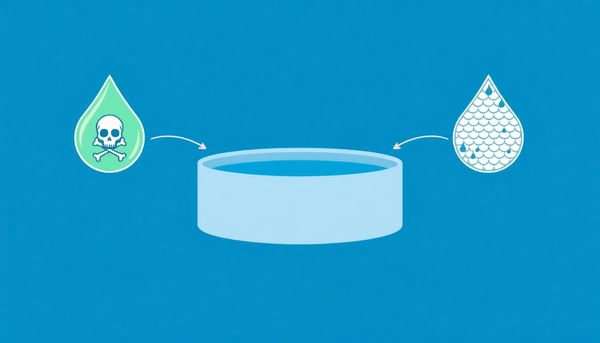
Scaling in a hot tub might seem like a minor annoyance at first, but it can quickly escalate into a formidable adversary if not addressed properly. My own experience with a stubborn scale issue taught me just how critical it is to maintain the right balance of calcium hardness. One day, I noticed a gritty buildup around the jets; a few weeks later, the pump started making ominous noises. Ignoring such signs can lead to costly repairs or replacements, which is why prevention is key.
To keep scaling at bay, begin by regularly monitoring the calcium hardness of your water. A digital calcium hardness tester or even simple test strips can help you stay informed. Aim for that sweet spot of 150-250 ppm. If your levels creep upward, dilute the water by draining a portion and refilling with fresh water. In areas notorious for hard water, consider using a hose filter when filling your tub. This small step can significantly reduce the mineral content before it even enters your hot tub.
Additionally, incorporate a scale control product as part of your routine maintenance. These products are designed to bind with calcium ions, preventing them from forming deposits. By staying vigilant and adjusting as needed, you can enjoy your hot tub without the worry of scale buildup causing unexpected headaches.
Balancing water chemistry in a hot tub is akin to orchestrating a symphony, where each element must be in perfect harmony to create a relaxing soak. Calcium hardness, the oft-overlooked musician in this ensemble, plays a critical role alongside pH and total alkalinity. Properly balanced calcium hardness not only enhances the effectiveness of sanitizers like chlorine and bromine but also ensures a safe and enjoyable spa experience.
During a winter evening soak in my own hot tub, I noticed the water felt unusually silky. A quick test revealed low calcium hardness levels, a common issue in areas with soft water. This softness can lead to equipment corrosion and foaming, much like the froth on a latte, but decidedly less appetizing. I promptly added a calcium hardness increaser, a product that, when sprinkled directly into the water, raises the calcium levels without a fuss.
Conversely, if your water teeters on the hard side, scaling can occur, reminiscent of those stubborn calcium deposits on your showerhead. Here, the remedy involves a gentle dilution of the water, possibly complemented by a scale control product, to maintain that ideal calcium range of 150-250 ppm. Remember, though, before reaching for the calcium chloride or preparing for water adjustment, always check the total alkalinity and pH first. These foundational elements need to be steady to support the calcium adjustments effectively, ensuring your hot tub remains a sanctuary of blissful, balanced water.
Maintaining the perfect balance of calcium hardness in your hot tub is an ongoing process. A crucial step in this journey is to test and adjust the water periodically. Regular testing isn’t just a chore; it's akin to keeping a finger on the pulse of your tub's health. By using reliable test strips or a liquid test kit, you can ensure that the level stays within the ideal range of 150-250 ppm, safeguarding both the tub and your skin from unwanted effects.
Consider this like a monthly ritual. Just as you wouldn't skip a medical check-up, checking your hot tub's calcium hardness ensures it remains a welcoming oasis rather than a hub of potential problems. For example, during one of my own monthly tests, I noticed the water felt unusually slippery. A quick test revealed the calcium level had dipped below 150 ppm. A small adjustment with a calcium hardness increaser brought everything back to normal, and the water’s texture returned to its lovely, balanced state.
Moreover, adjustments should be made thoughtfully. If the readings show levels creeping beyond 250 ppm, swapping a portion of the water with fresh supply can often do the trick, avoiding the need for more drastic measures. Remember, every adjustment ensures that your hot tub remains the relaxing sanctuary it's meant to be, free from the hassles of scale buildup or corrosion. Regular monitoring and fine-tuning not only preserve your equipment but also enhance your overall hot tub experience.
In the world of hot tubs, maintaining the right calcium hardness isn't just about ensuring clear waters—it's a shield against the silent saboteur known as corrosion. When calcium levels dip too low, the water becomes aggressive, seeking out minerals from anywhere it can, including your hot tub's vital components. A friend of mine learned this the hard way. Neglecting calcium hardness led to the unpleasant surprise of a corroded heating element, which not only disrupted her perfect evenings of relaxation but also resulted in costly repairs.
To prevent such woes, aim to keep your hot tub's calcium hardness between 150 to 250 parts per million (ppm). This sweet spot acts like armor, protecting metal parts like jets and heaters from the corrosive tendencies of soft water. Interestingly, it’s not just the visible parts that suffer; inner workings like pumps can also fall victim, leading to reduced efficiency and potential failure.
Regular testing, perhaps once a month, ensures you catch deviations before they cause trouble. If you find the levels too low, a scoop of calcium chloride can swiftly restore balance. Remember, maintaining this balance not only prolongs the life of your equipment but also preserves the luxurious feel of your hot tub, allowing you to enjoy countless blissful soaks.
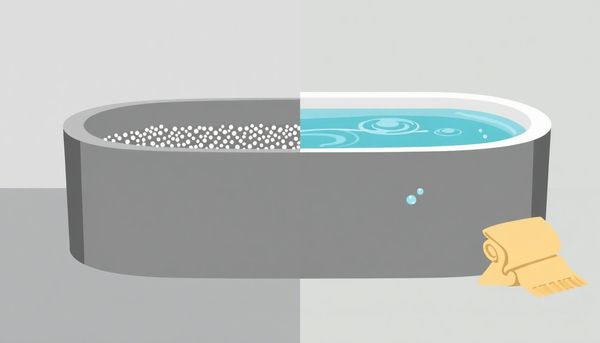
When low calcium levels appear in your hot tub, it’s not just a minor inconvenience; it's a call to action to prevent potential damage. Equipment corrosion is a real threat when calcium hardness drops, leading to costly repairs or replacements. The jets, heater elements, and even the shell can suffer if the water remains too soft. Additionally, low calcium hardness often results in that uninviting foam on the water’s surface.
To remedy this, the addition of a calcium hardness increaser is your best friend. This product, primarily composed of calcium chloride, works wonders by boosting the calcium content, thus fortifying your hot tub against the perils of corrosion. Be mindful, however, of the proper application method. Directly sprinkle the calcium chloride over the water’s surface, avoiding any premature mixing outside the tub. This ensures even distribution without unwanted chemical reactions.
Personal experience taught me the importance of this process when I noticed my jets weren’t quite as powerful as before. A quick test revealed low calcium levels, and after applying the increaser, the improvement was noticeable. The water regained its inviting clarity, and the foam subsided, bringing peace of mind and a more enjoyable soak. Regular monthly checks are crucial, as they help maintain that goldilocks zone of 150-250 ppm, keeping your hot tub in perfect balance.
Navigating the world of hot tub maintenance sometimes feels a bit like mastering a secret language. One crucial element of this language is calcium hardness, which, if not kept in check, can spell trouble for your relaxing oasis. Testing and adjusting these levels is simpler than it may seem. Once a month, when you arm yourself with either water test strips or a liquid test kit, you're on the right path to maintaining that perfect soak. Dip the strip into the water and, like a detective, compare the color against the guide provided on the bottle. Your target is to get those calcium levels between 150 and 250 parts per million (ppm).
On a personal note, I remember the first time I tested my own hot tub's water. The levels were off, and I was clueless at first. It turned out a simple adjustment of calcium chloride brought everything back to balance. Should your test reveal levels lower than 150 ppm, adding a calcium hardness increaser—calcium chloride—is your go-to solution. Think of it as giving your hot tub a necessary vitamin boost.
Conversely, if the scales tip over 250 ppm, dilution becomes your ally. Partially drain your spa and top it up with fresh water. This not only helps balance the calcium but also rejuvenates the water's overall quality. By keeping these levels in check, you ensure not only the longevity of your equipment but also a more pleasant and irritation-free soak.
In the world of hot tubs, maintaining balanced water chemistry isn't just about aesthetics; it's essential for ensuring the longevity of your equipment. Corrosion might sound like something that happens to old ships, but it's a very real threat to your hot tub if calcium hardness dips too low. The water can become aggressive, looking for minerals to leach out, and unfortunately, it finds them in the metal parts of your hot tub.
Imagine relaxing in a perfectly cozy hot tub, only to discover later that the heating element is corroded. This is not just inconvenient; it can lead to costly repairs. Keeping the calcium hardness between 150-250 ppm acts as a protective barrier, preserving the integrity of metal components like the heater, jets, and even the shell.
Last summer, a friend learned this the hard way. His spa, neglected for weeks, became a chemistry experiment gone wrong. The low calcium levels caused rapid corrosion, leaving him with a hefty repair bill. To prevent such mishaps, regular monitoring and adjustment are key. Monthly checks with test strips or a liquid kit can save you from a spa nightmare.
In essence, by diligently maintaining optimal calcium levels, you're not only prolonging the life of your hot tub but also ensuring each soak is as smooth and worry-free as possible. This small effort in water care pays off in sustainability and cost savings over time.
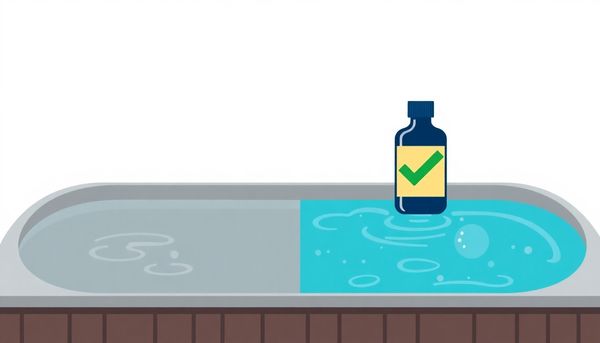
This article provided insights into maintaining your pool. Start your pool care journey today!
Want to become a pool maintenance expert? Our free Pool School course covers everything you need to know about pool care. From basic maintenance to advanced troubleshooting, you'll learn how to:
Join over 10,000 pool owners who have already transformed their pool care routine. Get started with our free Pool School course today!